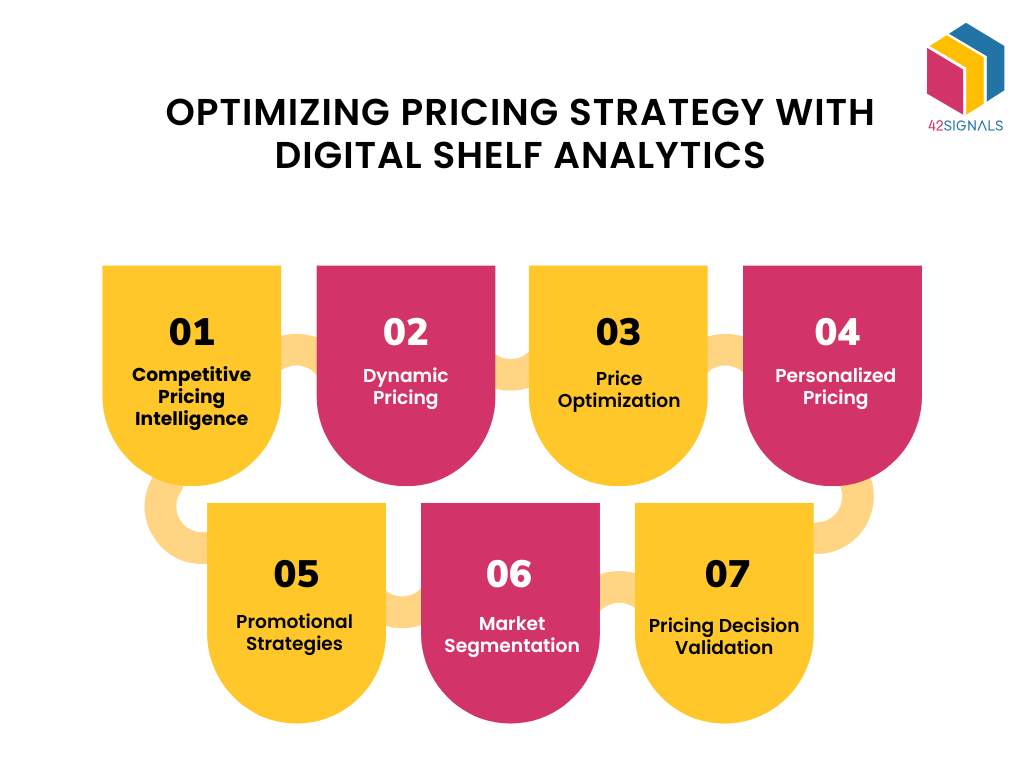In the fiercely competitive world of e-commerce, pricing strategy plays a critical role in driving sales, maximizing profitability, and gaining a competitive edge. With the advent of digital shelf analytics, businesses now have access to powerful insights and tools that can revolutionize their pricing strategies. In this blog, we explore the benefits of using digital shelf analytics for pricing strategy, uncovering how this approach can enhance decision-making, optimize pricing models, and ultimately drive business growth.
Understanding Digital Shelf Analytics
Digital shelf analytics refers to the collection, analysis, and interpretation of data related to product listings, pricing, and competitive positioning on digital platforms. It enables businesses to monitor and analyze the online marketplace, gaining valuable insights into customer behavior, competitor pricing, market trends, and product performance. Leveraging this data empowers businesses to make informed pricing decisions that are grounded in real-time market dynamics.
Optimizing Pricing Strategy with Digital Shelf Analytics

1. Competitive Pricing Intelligence:
Digital shelf analytics provides businesses with a comprehensive view of competitor pricing. By monitoring and analyzing competitor prices, businesses can benchmark their own pricing strategy and identify opportunities for optimization. Understanding how competitors price similar products allows businesses to make strategic pricing decisions to gain a competitive advantage.
2. Dynamic Pricing:
Digital shelf analytics enables businesses to implement dynamic pricing strategies. By leveraging real-time data on market demand, competitor pricing, and customer behavior, businesses can adjust their prices dynamically to maximize sales and profitability. This approach allows businesses to respond quickly to market fluctuations, promotions, and customer preferences, optimizing revenue generation.
3. Price Optimization:
Digital shelf analytics helps businesses identify the optimal price points for their products. By analyzing historical sales data, customer preferences, and market trends, businesses can determine the price elasticity of their products. This knowledge allows them to set prices that strike the right balance between maximizing revenue and maintaining customer satisfaction.
4. Personalized Pricing:
With digital shelf analytics, businesses can implement personalized pricing strategies. By analyzing customer data, including purchase history, browsing behavior, and demographics, businesses can offer targeted pricing incentives to individual customers. This approach enhances customer loyalty, improves conversion rates, and increases customer lifetime value.
5. Promotional Strategies:
Digital shelf analytics provides insights into the effectiveness of promotional pricing strategies. By analyzing the impact of promotions on sales, customer acquisition, and profitability, businesses can fine-tune their promotional activities. This data-driven approach ensures that promotions align with business objectives and deliver the desired results.
6. Market Segmentation:
Digital shelf analytics allows businesses to segment their market based on customer preferences and price sensitivity. By identifying different customer segments and analyzing their purchasing behaviors, businesses can tailor their pricing strategies to each segment’s needs and willingness to pay. This targeted approach helps businesses optimize pricing for maximum impact.
7. Pricing Decision Validation:
Digital shelf analytics serves as a validation tool for pricing decisions. By continuously monitoring pricing performance and comparing it to predefined metrics, businesses can assess the success of their pricing strategies. This iterative process enables businesses to make data-driven adjustments and refine their pricing models over time.
Conclusion
Digital shelf analytics has revolutionized the way businesses approach pricing strategy in the e-commerce landscape. By leveraging real-time data and insights, businesses can optimize pricing decisions, stay competitive, and drive growth. From competitive pricing intelligence to dynamic pricing, personalized pricing, and market segmentation, digital shelf analytics offers a range of benefits that empower businesses to make informed pricing decisions. Embracing this data-driven approach equips businesses with the tools needed to navigate the complexities of the online marketplace and unlock their full pricing potential.







